Introduction Guide to Telescoping Ladders
Have you ever found yourself frustrated by a clunky, awkward ladder that seems to take up more space than it’s worth? Or maybe you’ve struggled with storing a ladder that feels like it could fill a warehouse on its own? Enter the hero of the hour: the telescoping ladder!
One of the best things about telescopic ladders is how they save space. Unlike those big, bulky ladders that hog your garage, these ones can squeeze into cupboards, sheds, or even the trunk of your car. But don’t let their small size fool you! When fully extended, they can reach high enough for most household jobs, like reaching ceilings or getting into the loft.. But before you rush out to buy one, there are a few things you should know.
With so many options out there, it can be overwhelming to choose the right telescoping ladder. But fear not! In this friendly guide, we’ll walk you through everything you need to know about telescopic ladders, from how they’re designed to the cool features they offer. By the end, you’ll be ready to pick the perfect ladder and tackle any job with confidence. Let’s get started!
Looking for a high-quality telescopic ladder? Click here to browse our full range.
Guide to Telescoping Ladders: Exploring Telescoping Ladders
Telescoping ladders are like the superheroes of the ladder world.Their main feature is the ability to extend and retract easily, which makes them a highly versatile and flexible tool, while ensuring ease of storage and transport.Typically crafted from aluminum or fiberglass, they offer a balance of lightweight construction and robustness.
They’re not just cleverly designed to shrink down to a tiny size for easy storage and transport, but they also stretch out to different heights as you need them.While the majority of telescopic ladders reach heights of up to 12 feet, certain models can extend up to 16 feet for added versatility
Whether you’re fixing up your house or tackling a construction project, telescopic ladders have your back.Telescopic ladders are perfect for anyone who wants the flexibility of a regular ladder but with the bonus of being able to fold it away and take it wherever they go.
Guide to Telescoping Ladders : Types of telescopic ladders
As you know, buying a ladder is essential for many jobs. The market is vast, offering numerous options to cater to different needs and preferences. In this post, we want to shine a spotlight on telescopic ladders. These innovative tools have revolutionized the way we approach tasks that require reaching heights. From lightweight aluminum to heavy-duty steel, each type of telescopic ladder offers unique features and benefits tailored to various applications. Let’s delve into the distinct types of telescopic ladders and explore their materials, designs, and functionalities.
1.Aluminum Telescopic Ladders:
- Material Composition: Constructed from various aluminum alloys, typically 6061-T6 quality aluminum.
- Key Features:
- Extruded aluminum ball joint shoes with non-slip rubber provide stability and grip on various surfaces.
- Gravity and spring-operated handles facilitate smooth extension and retraction of the ladder.
- Internal guides ensure seamless connection between ladder sections, enhancing stability.
- Equipped with a locking system to secure the ladder at desired heights, preventing accidental collapse.
- High-impact resistant plastic rail covers protect the ladder against wear and tear.
- Non-slip extruded aluminum steps in D-shape offer secure footing and direct connection to the ladder rail.
- Lightweight yet sturdy, aluminum telescopic ladders are popular for their durability and corrosion resistance.
- Ideal for general household tasks, light construction work, and DIY projects.
- They often feature non-slip rungs and secure locking mechanisms for added safety.
- Lightweight yet durable construction ensures longevity, making them suitable for both indoor and outdoor use.
- Fireproof and stainless properties make them safe for use in various environments.
- High thermal and electrical conductivity may be advantageous in specific applications.
2. Fiberglass Telescopic Ladders:
- Material Composition: Rails are crafted from polystyrene resin reinforced with fiberglass, often with ultraviolet filters for sun protection.
- Key Features:
- Extruded aluminum ball joint shoes with non-slip rubber provide stability and traction on different surfaces.
- Gravity and spring-operated handles facilitate easy extension and retraction of the ladder.
- Internal guides ensure seamless connection between ladder sections, promoting stability and safety.
- Equipped with a locking mechanism to secure the ladder at desired heights, minimizing the risk of accidents.
- High-impact resistant plastic rail covers safeguard the ladder against damage.
- Non-slip extruded aluminum steps in D-shape offer secure footing and direct connection to the ladder rail.
- Lightweight construction makes them easy to transport and maneuver.
- Non-conductive properties make fiberglass ladders safe for use around electricity.
- High resistance to corrosive substances enhances durability in challenging environments.
- Fiberglass ladders are heavier than aluminum ones but provide superior strength and durability.
3 .Steel Telescopic Ladders:
Material: Constructed from heavy-duty steel for exceptional strength and durability.
Features: They feature Ideal for rugged construction, making them suitable for heavy-duty industrial applications and construction projects.
Offers unmatched load-bearing capacity, making them suitable for tasks that require extra stability and support. Equipped with reinforced components and robust locking mechanisms for added safety.
Steel telescopic ladders typically come with anti-slip rubber feet for stability and safety on various surfaces.
While heavier than aluminum or fiberglass counterparts, steel ladders provide robust support and can withstand rigorous use in demanding environments.
4. Carbon Fiber Telescopic Ladders:
Material: Engineered from advanced carbon fiber composites.
Features: carbon fiber telescopic ladders represent the Unique combination of strength and lightweight construction.
Carbon fiber offers an exceptional strength-to-weight ratio, making these ladders incredibly durable and resilient.
They are ideal for professionals and enthusiasts seeking maximum performance and portability. With non-conductive properties and resistance to corrosion,
Highly resistant to corrosion and fatigue, making them ideal for demanding environments. Equipped with non-slip rungs and feet for secure footing.
Carbon fiber telescopic ladders excel in both indoor and outdoor applications, from electrical work to outdoor maintenance tasks.
5. Multi-Purpose Telescopic Ladders:
Versatility is the hallmark of multi-purpose telescopic ladders, as they can be adjusted to various heights and configurations to suit various tasks.
Adjustable height settings and robust locking mechanisms ensure stability and safety. Suitable for a wide range of applications, from household chores to professional projects.
These ladders often come with hinge mechanisms, allowing them to be transformed into A-frame ladders, extension ladders, or even scaffolding platforms.
Multi-purpose telescopic ladders are perfect for contractors, handymen, and homeowners who require a single ladder for a variety of tasks
6. Telescopic Attic Ladders:
Designed specifically for accessing attic spaces, these ladders offer a convenient solution for homeowners needing occasional access to storage areas or HVAC equipment.
Telescopic attic ladders can be installed directly into attic openings and often come with insulated doors to prevent heat loss and drafts.
They feature lightweight yet sturdy construction, making them easy to maneuver and operate.
With safety features such as non-slip steps and handrails, telescopic attic ladders provide secure access to elevated spaces while maximizing space efficiency in the home
Equipped with safety features such as handrails and non-slip treads.
7.Compact Telescopic Ladders:
- Designed with portability in mind, compact telescopic ladders are lightweight and easy to transport.
- They can collapse into a compact size, making them suitable for storage in tight spaces such as closets or car trunks.
- These ladders are ideal for individuals who need a ladder on the go, such as RV owners, campers, or tradespeople who frequently move between job sites.
- Equipped with ergonomic handles for easy carrying.
Guide to Telescoping Ladders: Where is the telescopic ladder used?
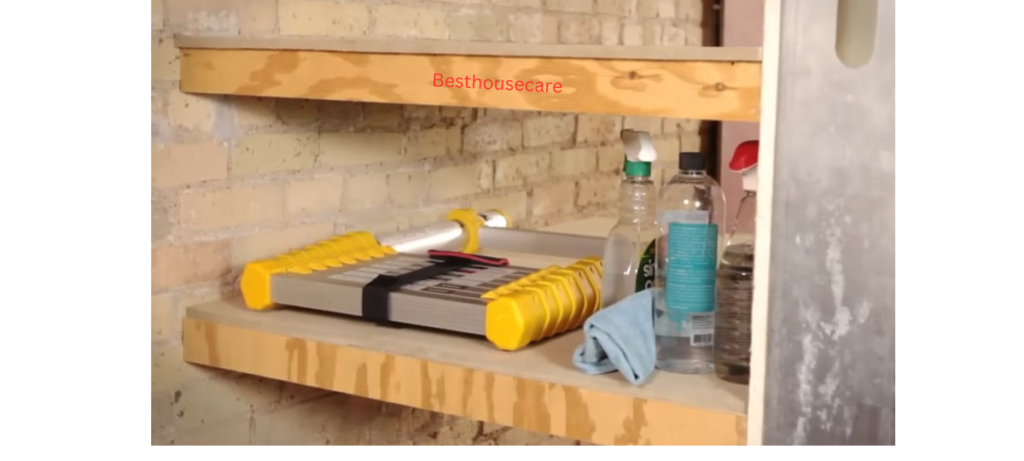
- Balcony Work: Telescopic ladders are utilized for tasks requiring access to balconies, facilitating maintenance and repairs with ease and safety.
- Lighting Pole Installation: These ladders prove invaluable in the installation and maintenance of lighting poles, ensuring efficient and secure access to elevated fixtures.
- Service Wiring on Apartment Facades: Telescopic ladders provide a stable platform for installing service wiring on apartment facades, enhancing efficiency and safety during the process.
- High-Floor Window Maintenance: For tasks involving the maintenance of windows on high floors, telescopic ladders offer a practical solution for safe and accessible elevation.
- Painting and Decorating: They’re helpful for painters and decorators who need to reach high walls or ceilings.
- Air Conditioning Checks in High-Ceiling Rooms: Telescopic ladders are instrumental in conducting air conditioning checks in rooms with high ceilings, providing secure access for maintenance purposes.
- Cover Cleaning and Maintenance: Whether for covers on outdoor structures or industrial equipment, telescopic ladders facilitate safe and efficient cleaning and maintenance procedures.
In addition to these specific applications, know to about telescopic ladders find extensive use in various industries and sectors:
- Construction and Civil Works: Telescopic ladders are indispensable for work at height during the construction and renovation of structures, ensuring worker safety and efficiency.
- Industrial Maintenance: These ladders are employed for the repair and maintenance of equipment and systems in industries, offering a reliable solution for accessing elevated areas.
- Home Repair and Maintenance Services: From painting walls to cleaning gutters, telescopic ladders are essential tools for tasks around the home, providing homeowners and maintenance professionals with a safe and convenient means of access.
- Events and Shows: Telescopic ladders play a vital role in event production, facilitating the setup of stages and execution of production tasks with ease and efficiency.
- Outdoor Adventures and Recreation: Campers, hikers, and outdoor enthusiasts appreciate the convenience of telescopic ladders when setting up camp or accessing elevated vantage points. Whether it’s hanging hammocks, pitching tents, or exploring treetop views, these ladders offer a practical solution for outdoor adventures.
- Vehicle Maintenance and Access: Automotive professionals and enthusiasts alike rely on telescopic ladders for accessing elevated areas of vehicles, such as roof racks or engine compartments. Their compact size and lightweight construction make them ideal companions for mobile mechanics and road-trippers alike.
- Electrical and Telecommunications Installations: Essential for installations at height, telescopic ladders ensure the safety and efficiency of electrical and telecommunications projects, allowing workers to access elevated areas with confidence.
- Emergency Response and Rescue Operations: Emergency responders and rescue teams often rely on telescopic ladders to access hard-to-reach areas during rescue operations. Whether it’s rescuing individuals from elevated structures or accessing confined spaces, these ladders provide a safe and reliable means of elevation.
Guide to Telescoping Ladders to Fulfill Your Requirements:
Determine Your Height Requirements: Telescopic ladders typically offer varying extension heights to accommodate different needs, so ensure the ladder you choose can comfortably reach your desired elevation. Consider the maximum height you’ll require for your tasks, whether it’s reaching high shelves at home or accessing elevated areas in construction sites. Choose a ladder with adjustable height settings that can cater to your specific requirements.
Weight Capacity Consideration:One of the most crucial factors to consider when selecting a telescopic ladder is its weight capacity. Choose a telescopic ladder with a weight rating that accommodates not only your body weight but also the weight of any tools or materials you’ll be carrying.Safety should always be a top priority when working at heights. Ensure that the ladder you choose can support your weight along with the weight of any tools or materials you’ll be carrying while using it. Exceeding the weight limit can compromise stability and increase the risk of accidents, so it’s essential to select a ladder with a suitable weight rating.
Material and Build Quality: Choose a telescopic ladder constructed from high-quality materials such as aircraft-grade aluminum or fiberglass, known for their durability, strength, and lightweight properties.
Consider factors like corrosion resistance and weatherproofing, particularly if you’ll be using the ladder outdoors or in challenging environments.
Prioritize Safety Features:Look for telescopic ladders equipped with essential safety features, including anti-slip rungs, locking mechanisms, and stabilizing feet.
Ensure the ladder complies with relevant safety standards and certifications to guarantee peace of mind during use
Portability and Storage:Evaluate the portability of the telescopic ladder, considering its weight and compactness when collapsed.
Look for models with integrated carry handles or straps for easy transportation.
Consider storage space requirements, especially if you have limited space in your home or vehicle.
User-Friendly Design: Choose a telescopic ladder with intuitive operation and smooth extension/retraction mechanisms.
Consider additional features like adjustable height increments for versatility in different tasks.
Pay attention to ergonomic design elements such as comfortable grip handles and angled rungs.
Reviews and Recommendations: Research customer reviews and testimonials to gain insights into the performance, reliability, and durability of different telescopic ladder models.
Seek recommendations from professionals, friends, or colleagues who have firsthand experience using telescopic ladders for similar purposes.
Budget Consideration: Set a realistic budget based on your requirements, considering factors such as height, weight capacity, material quality, safety features, and additional functionalities.
Compare prices across different brands and models to find the best value for your investment, ensuring that you prioritize safety and quality within your budget constraints.
Recommendations for telescopic ladder how to use correctly
The telescopic ladder differs from other models due to its great versatility . However, as with other stairs, it is advisable that, before starting your household tasks, you check that the staircase is in perfect condition. And, even though the ladder is newly purchased, it may have suffered significant damage during transportation or storage. For this reason, at Altipesa we recommend that you follow these eleven tips to make good use of your telescopic ladder :
RETRACTING THE TELESCOPIC LADDER
Lifting Technique:
- Lift the telescopic ladder from the end that will rest against the wall to ensure proper handling.
Angle Adjustment:
- Maintain an angle of approximately 75° between the ladder’s base and the surface it rests on for stability.
Avoid Obstructions:
- Do not lean the ladder against an open or unlocked door to prevent accidents.
Roofing Safety:
- If performing roofing work, ensure there are three free steps at the top of the ladder for safe maneuverability.
Stability on Uneven Terrain:
- Level the ladder’s legs according to the irregularities of the terrain using pieces of wood as stops to prevent wobbling.
TELESCOPIC LADDER HOW TO USE
Positioning:
- Place the ladder at an approximate angle of 75º between its base and the surface it rests on.
- Ensure that the ladder’s rungs are in a horizontal position for stability.
Securing Locking Devices:
- Always secure the corresponding locking devices before using the ladder to prevent accidental collapses.
Ascending and Descending:
- Ascend and descend the ladder straight ahead, avoiding going over the last three steps for safety.
Stability:
- Ensure that the ladder’s support points are firmly seated on a stable, fixed, and resistant surface while performing tasks.
Extension for Upper Floors:
- When accessing upper floors, extend the ladder at least 1 meter above the landing level for safe entry and exit.
Avoid Overloading:
- Do not protrude from the ladder or perform tasks that require lateral loads to prevent accidents.
Know to about te;escopic ladder remember to have proper maintenance
As you know, telescopic ladders are invaluable tools for reaching heights efficiently and safely. From their versatility in various applications to their focus on user convenience, these ladders have become essential assets in both professional and household settings. However, ensuring their longevity and optimal performance requires proper maintenance and care.Maintenance Tips for Telescopic Ladders:
- Clean after Each Use:
- Remove any material residues, especially paint, grease, and oils, to keep the ladder free from contamination.
- Lubricate Moving Parts:
- Before storing the ladder, clean and lubricate its moving parts to prevent corrosion and ensure smooth operation.
- Handle with Care:
- Always place the ladder carefully on the ground; avoid throwing or dropping it to prevent damage.
- Proper Storage:
- Store the ladder folded and horizontally on supports anchored to the wall for stability and safety.
- Avoid Sunlight and Heat:
- Fiberglass ladders should not be exposed to direct sunlight. Additionally, avoid storing ladders near heat sources or corrosive substances to maintain their integrity.
- Consider Weight and Conditions:
- If the ladder’s weight exceeds 25 kilograms or conditions are adverse, transfer it with the help of two people for safety.
- Secure Transportation:
- During transportation, ensure moving parts are locked, and ropes are properly organized to prevent dragging or hanging.
- When transporting by car, strap the ladder against the vehicle’s fastening elements to prevent damage. Place it on smooth rubber or fabric surfaces for stability.
By following these maintenance tips, you can prolong the lifespan of your telescopic ladder and ensure safe and reliable use for various tasks.
The Pro Telescoping ladders elevating Your Climb with unmatched Features
- High-Quality Telescopic Mechanism: Pro telescopic ladders boast a robust and durable telescopic mechanism that ensures a smooth and secure fit with every extension. This mechanism not only enhances user experience by facilitating effortless height adjustment but also contributes to the overall longevity of the ladder.
- Enhanced Safety with Non-Slip Steps: Safety is paramount when working at heights, and Pro telescopic ladders prioritize user safety with non-slip steps. These specially designed steps provide greater stability and traction, reducing the risk of slips and falls even in challenging conditions, such as wet or muddy surfaces.
- Durable Yet Lightweight Construction: Crafted from high-quality materials, Pro telescopic ladders strike the perfect balance between durability and portability. The use of lightweight yet sturdy materials makes these ladders easy to transport and handle, without compromising on strength or stability.
- Reliable Locking System: A stable and secure position is essential for safe ladder usage, and Pro telescopic ladders deliver just that with their reliable locking system. Whether fully extended or adjusted to a specific height, the locking mechanism ensures that the ladder remains firmly in place, providing users with peace of mind and confidence during use.
- Stabilizer Bar and Rubber Feet for Added Support: Pro telescopic ladders go the extra mile to enhance stability and firmness on various surfaces. Equipped with a stabilizer bar and rubber feet, these ladders offer better support and grip, even on uneven or slippery surfaces. The stabilizer bar provides additional lateral support, while the rubber feet prevent slippage and minimize movement, further enhancing user safety.
- Multi-Functional Design: Beyond the essential features, Pro telescopic ladders often come with additional functionalities that increase their versatility and utility. Some models may feature integrated tool trays, carrying handles, or even convertible configurations that allow for different ladder positions, such as A-frame or extension, to accommodate a wide range of tasks and environments.
Some tips to Ensure your Safety on Telescopic Ladder
When using the telescopic ladder , you must pay attention to its safety locking system which, once activated, guarantees that the ladder remains completely immobile, offering the user maximum stability. Its cushioning system makes it close smoothly, avoiding trapping of hands and arms.
After purchasing know to about telescopic ladder how to use it safely, we must follow the following recommendations:
- Do not place anything under the base of the telescopic ladder to increase its height.
- Before climbing, we must ensure that the securing latches on each section are active .
- When the ladder is extended, you should never step on the highest rung .
- The locking systems should never be manipulated when standing on the ladder .
- Hold the ladder by the couplings available under each rung to avoid entrapment.
- Always place the ladder on a level surface .
- Even if we have a telescopic ladder with non-slip steps, we must always climb the device wearing safety boots .
- Never use the telescopic ladder in a horizontal position .
- Never use the ladder without first securing the corresponding fixing mechanisms.
- Before using a ladder, make sure that the sole of your shoes is free of grease, mud or similar substances. Remember that you must wear appropriate footwear adapted to the shape of your feet (do not wear sandals, unbuttoned shoes, etc.).
- Do not use a ladder made of conductive materials, such as steel or aluminum, for electrical work.
- When going up and down a ladder, you should always face the steps.
- In elevated places, the ladder must exceed the limit of the structure on which it rests by one meter.
- At no time should the ladder be used by two people simultaneously.
- If you are going to work at height you must use safety measures such as a harness and seat belt.
Some of the many advantage and Disadvantage of a Telescoping ladders include:
1. Advantages of Telescopic Ladders
Telescopic ladders offer a range of advantages that make them a popular choice for both professionals and homeowners:
Compactness: Telescopic ladders are incredibly compact when collapsed, making them easy to store in small spaces like closets, car trunks, or under beds. This feature is especially beneficial for those with limited storage space.
Portability: Due to their lightweight construction and collapsible design, telescopic ladders are highly portable. They can be carried around effortlessly, making them ideal for professionals who need to move from one job site to another.
Adjustability: Telescopic ladders can be extended to various heights, providing versatility for different tasks. This adjustability allows users to reach different heights without the need for multiple ladders, saving both space and money.
Ease of Use: These ladders are designed for simplicity and ease of use. Extending and retracting the ladder is typically a straightforward process, requiring minimal effort and no special tools.
Safety Features: Many telescopic ladders come with built-in safety features such as anti-pinch mechanisms and locking systems to prevent accidents and ensure stability while in use.
Durability: High-quality telescopic ladders are constructed from robust materials such as aluminum or fiberglass,
Ensuring durability and longevity even with frequent use.
- Time-saving: The ability to quickly set up and adjust the height of telescopic ladders can save valuable time on job sites, increasing productivity and efficiency.
- Cost-effectiveness: While the initial investment may be higher than traditional ladders, telescopic ladders offer excellent value over time due to their durability, versatility, and time-saving features.
Overall, the advantages of telescopic ladders make them a practical and efficient solution for various climbing and access needs, both for personal and professional use.
- Portability and easy storage due to its foldable and compact design.
- Height adjustment to suit different needs and situations.
- Lightness and easy handling, which makes them ideal for work in small spaces.
- Robust and resistant construction to withstand significant loads.
- Wide variety of sizes available to cover different height ranges.
2. Disadvantages to Consider
Although telescopic ladders have many advantages, it is also important to take into account some drawbacks:
- Limited load capacity compared to larger, heavier ladders.
- Some models may be less stable at maximum heights, so caution should be used.
- They are not ideal for long-term jobs or tasks that require a stable platform.
- It is essential to follow safety and use instructions to avoid accidents.
conclusion
telescopic ladders offer a versatile and efficient solution for accessing heights in various settings, from home repairs to professional construction projects. Their compact, portable design makes them easy to store and transport, while their adjustable height capabilities provide flexibility for different tasks.
Whether made from aluminum, fiberglass, steel, or carbon fiber, these ladders balance durability with lightweight construction, catering to diverse needs and environments. With safety features such as non-slip steps and secure locking mechanisms, telescopic ladders ensure stability and peace of mind during use.
Frequently Asked Questions about Telescopic Ladders
1. What are telescopic ladders? Telescopic ladders are innovative tools designed to extend and retract easily, offering versatility in height adjustment for various tasks. They are known for their compactness and portability.
2. What materials are telescopic ladders made from? Telescopic ladders are typically made from materials like aluminum, fiberglass, steel, or carbon fiber. Each material offers unique advantages in terms of weight, durability, and suitability for different environments.
3. What are the advantages of telescopic ladders? Telescopic ladders are compact, lightweight, and easy to store, making them ideal for small spaces. They offer adjustable heights, safety features like non-slip steps, and are suitable for a wide range of tasks from home repairs to professional use.
4. What are the different types of telescopic ladders? Telescopic ladders come in various types including aluminum, fiberglass, steel, carbon fiber, multi-purpose, attic, and compact models. Each type is tailored to specific needs such as durability, weight capacity, and application versatility.
5. How do I choose the right telescopic ladder? When choosing a telescopic ladder, consider factors such as maximum height required, weight capacity, material durability, safety features, and ease of storage and transport. These factors ensure the ladder meets your specific needs and provides safe usage.
6. What safety precautions should I take when using a telescopic ladder? Always ensure the ladder is placed on a stable surface, use safety locking mechanisms, avoid overloading, and follow proper climbing techniques. Regular maintenance and adherence to safety guidelines are crucial for safe and effective ladder use.
7. What are some common uses for telescopic ladders? Telescopic ladders are used for a wide range of tasks including home maintenance, construction projects, painting, electrical installations, outdoor activities, and emergency rescue operations. Their versatility and portability make them indispensable tools in various industries and settings.
8. How should I maintain a telescopic ladder? To maintain a telescopic ladder, clean it after each use, lubricate moving parts, store it properly to avoid damage, and protect it from sunlight and corrosive substances. Following these maintenance tips ensures longevity and optimal performance.
9. Are telescopic ladders safe for use around electricity? Fiberglass telescopic ladders are non-conductive and safe for use around electricity. However, caution should always be exercised to prevent accidental contact with electrical hazards.
10. Can telescopic ladders be used for heavy-duty tasks? Certain models of telescopic ladders, such as those made from steel or heavy-duty aluminum, are designed for heavy-duty tasks and industrial applications. Always check the weight capacity and specifications to ensure suitability for the intended task.


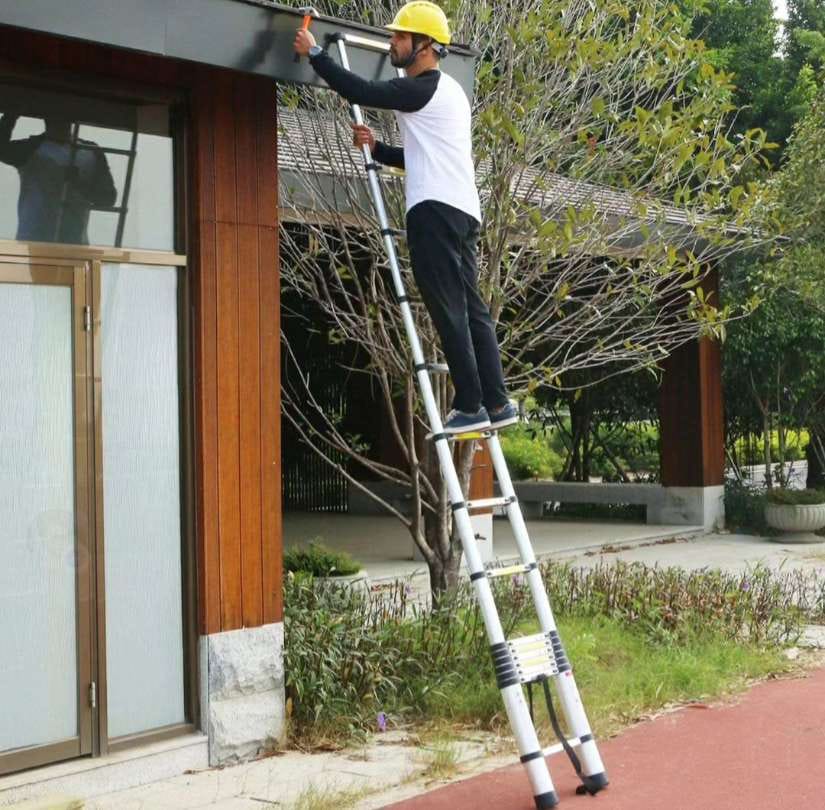

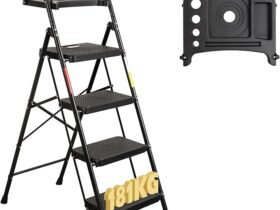

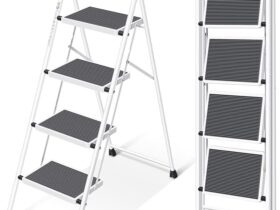
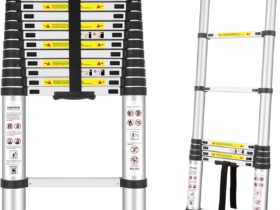
Leave a Reply
View Comments